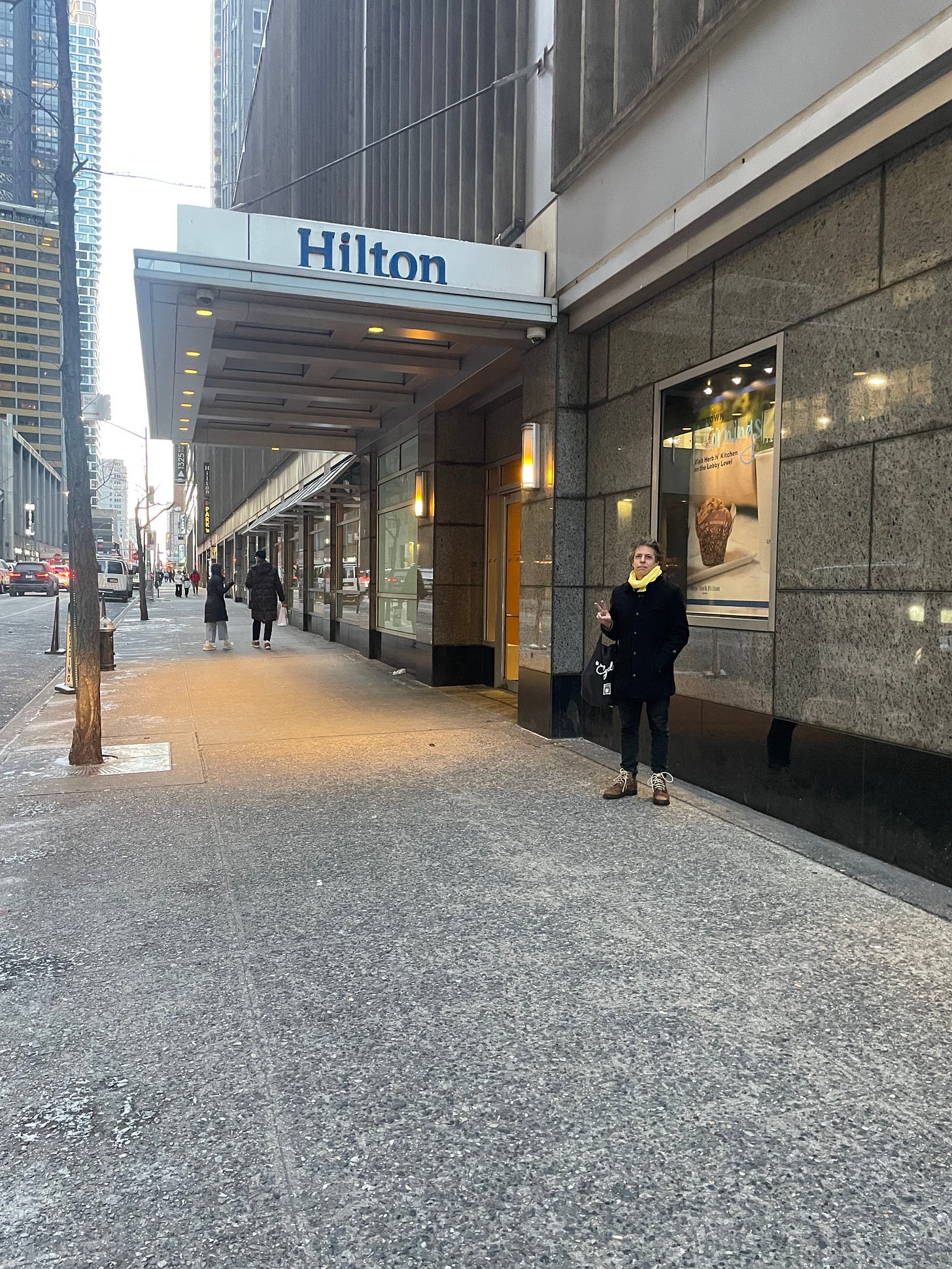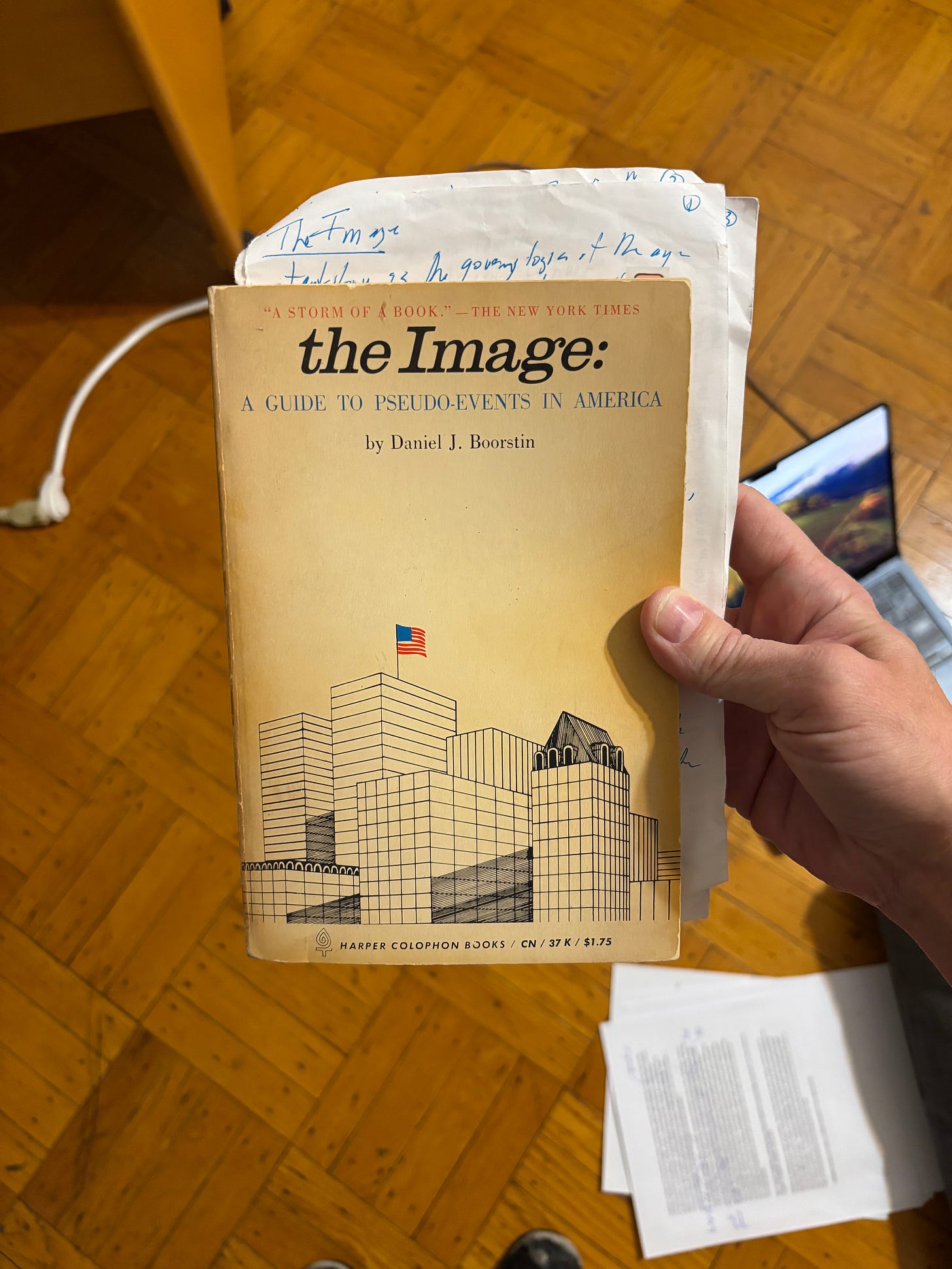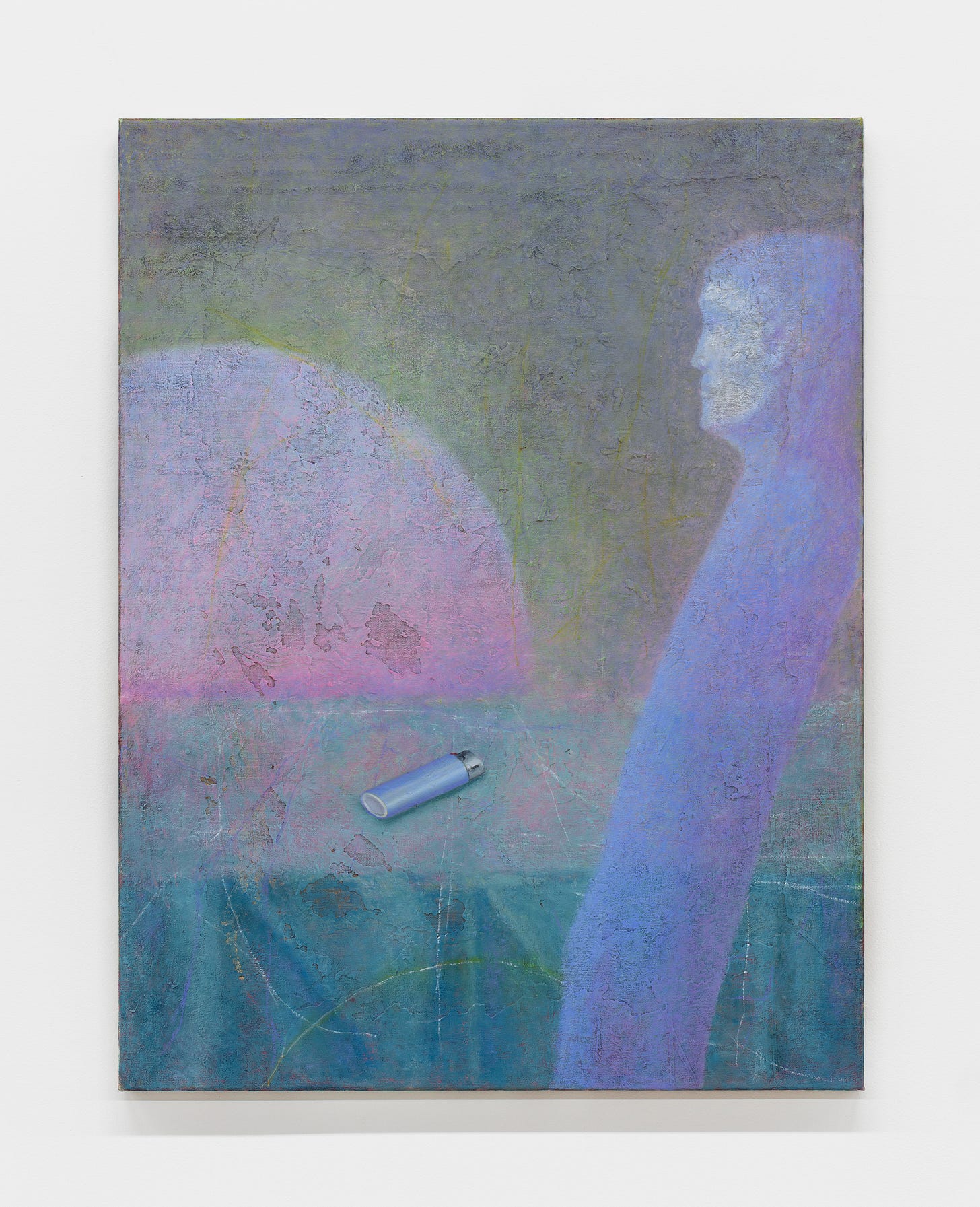The Last Days of the Biden Administration
Just kidding! It's Daniel Boorstin's book The Image and a eulogy for Alastair Mackinven

Sorry, politicos, this edition of Spigot has nothing to do with the Biden administration—or does it?? As with all Substacks, my quotidian activities and half-baked thoughts surely ramify to encompass the zeitgeist, vibe, and Weltanschauung.
This month I’ve found little reason to go out of the house. The days have been riddled with illness serious and small (everyone in New York seems to have gotten sick at some point), disaster, and death. The LA wildfires exploded, and I spent a couple days refreshing my browser every ten minutes, pouring for hours over the staggering number of fundraising efforts and trying to figure out how much I could give and to whom. I let work pile up in torpid December, so lately I’ve been handcuffed to my laptop, and it’s been freezing in New York.
And then, on top of all that, news came down that an old friend had died. More on that below.
My response to this state of affairs has been to deliberately waste the free time I’ve had: watching the worst movie I could find, but only a third of it; reading ten pages of a book, then tossing it aside; listening to half a podcast about some irrelevant topic or old movie. It was a kind of protest, but an intentionally stupid and self-mutilating one, at what I’m not quite sure. Is watching time swirl down one drain any better than watching it swirl down another? What about that advice Mike Tyson gave me as a child?
All of which to say is, I haven’t seen much art lately, aside from a final trip to the Thomas Schütte show at MoMA, which afforded a visit to a nearby historical site. Thus this week you’ll have to make do with something a little ~intellectual~ and something a little blue.
Books
The most notable book I’ve read in the last month—thank you, Alex—was Daniel Boorstin’s 1961 The Image: A Guide to Pseudoevents in America, for an essay about art, professional wrestling, PR, and anti-institutionalism that I’m trying to write. Editors, call me! The book is sort of like an NYT Op-Ed writer’s version of McLuhan and Debord. Boorstin, coming from a rather different place, arrived at some related ideas.
Boorstin was a classic Western Civ elitist, while subscribing to liberal American notions of democracy—if the demos could be properly educated, of course. Harvard, Rhodes Scholar, Oxford, Yale Law (and, funny enough, Swarthmore) before arriving at U Chicago in 1944, the conservative haven where he settled for twenty-five years as a history prof, all of which should give you some insight into his leanings. During the Ford Administration he became the Librarian of Congress. Politically, he was opposed to affirmative action and ’60s campus activism; in the ’30s he was a Communist but ratted people out to HUAC twenty years later. He might as well have founded The New Criterion.
The Image, published during his prime Chicago years, takes a historian’s approach, with lots of granular detail supporting fairly loose (if consistently reiterated) concepts or themes. The book begins with Boorstin’s scrutinizing of mass-media journalism and its relationship to government; logically enough for the times, he approached analysis vis-à-vis the relationship of one seemingly implacable institution to another. The appetite for ever more news in 20th-century America required that news be manufactured; thus the press release and press conference became the first kinds of pseudoevent. Page filler; words, not deeds. The sit-down interview—which Boorstin construes as almost inherently a puff piece—is also a pseudoevent, since it’s a scheduled conversation whose goal is the production of further discourse. A president says X; in response, the opposition party says Y; neutral experts are called upon to interpret; and so on. Boorstin was, at an early juncture, pointing out the mechanisms of the news cycle, which today might as well be conflated with the outrage cycle. The recently manufactured Harper’s imbroglio, to cite an example with which you might be familiar, was a fat chain of sausage-link pseudoevent.
So far, then, Boorstin, not bad at all. As he goes on to carve a path through different fields with his notion of the pseudoevent, however, results vary. Tourism, which lends itself readily to his framework, is all pseudoevent (especially compared to the elite origins of the travel industry, which Boorstin clearly venerates—the Grand Tour and “real” encounter with other cultures as opposed to prefabricated ones). His chapter on arts and letters takes up positions against abstraction and postcard reproductions of Old Masters while evincing strange obsessions with “elevator music” and Reader’s Digest, the highly popular midcentury journal that produced condensed summaries of books and other magazines’ articles for simpler and broader consumption. Despite its implicit—practically explicit—elitist posture, The Image does illuminate the path toward what we now semi-ironically call “the discourse,” wherein mediated conversation spirals swiftly away from any originary subject to self-referentiality and an entertainment unto itself.
The book accrues more tedious aspects as it goes on. Boorstin’s attempt to contrast “the ideal” and “the image” relies on some old-fashioned and/or goofy notions of principle, for example, the noble American dream versus the ignoble illusions we produce. It’s “We used to be a proper country” type stuff that rings alternately deluded, aspirational, or archaic. He’s concerned with how America projects its identity abroad, which is no surprise: the Cold War forms a key subtext for this book, right down to its excellent cover. (It was designed by Paul Bacon, who crafted scads of iconic book covers of the 1960s and ’70s, including Catch-22, Portnoy’s Complaint, The Power Broker, and Jaws.) In a bit sure to please those who masturbated themselves to sleep over the last decade for discovering Christopher Lasch, Boorstin calls Americans narcissists, in love with their own image.
The Image does offer theoretical grist, however, with a small but evocative point in discussing the figure of the celebrity, which Boorstin drolly dubs “The Human Pseudo-event.” The celebrity is famous for being famous, a truism apparent even to a U Chicago prof in 1961 and not a formulation I knew him as the author of. Of this fact, Boorstin writes, “If it is mere tautology, it is no more puzzling or fantastic or tautologous than much of the rest of our experience. Our experience tends more and more to become tautology—needless repetition of the same in different words and images.” He concludes, “What is remarkable is not only that we manage to fill experience with so much emptiness, but that we manage to give the emptiness such appealing variety.”
Boorstin here draws a potent connection between the notion of repetition and (re)iteration—that is, the basis of tautology—with fame and the drumbeat of public relations. If the United States as a place is particularly celebrity-smitten (or -afflicted, if you prefer), its culture is infused by tautology. The influencer era is nothing if not a tautological age. What happens, then, when tautology becomes the culture’s axiom?
Art
I can’t believe I’ve begun writing obituaries for people I know, though I guess it’s preferable to the other possibilities. The artist Alastair MacKinven passed away a couple weeks ago at age 53.
I knew Alastair first as a musician through my friend Robert. A strikingly sweet person. We never lived in the same city, but we spent many hours together, and my affection toward him transcended those of a happy, geographically distant acquaintance. Probably he had that effect on everyone. Easily charming, sexy, with a slightly oversize nose immortalized in song.
I spent a week as the world’s least muscular roadie with Alastair and the rest of the band Country Teasers on tour in 2006. Austin, Memphis, New Orleans, Nashville, a place or two place I’m forgetting. At the time and thereafter, I knew Alastair made art, conceptual performance among other things. It didn’t totally click for me, though it was witty and a little cracked. (Likewise his writing, as you can see in this 2021 press release that discusses the horror of living in England.) It didn’t seem like what I’d have imagined him making. That alignment means little one way or the other, of course. But something different, a dreaminess, hung in his eyes always, at least as I remember him.
It made sense, then, when he later revealed himself to be an oneiric, highly talented painter. The shift in material and approach was rich. You see a lot of woo-woo work in the artworld, and most of it is dumb, but his Blakean paintings seemed imbued with a little of the beyond. You know how when you dream, some of the details elude you afterward, and the things that made perfect sense within the cocoon of sleep seem bizarre upon waking? It was as if Alastair recalled every detail of the dream eidetically yet chose to transcribe in a Fauvist palette only its warm, cool heart. Meaning hung in the air, refusing to touch down. I loved his shows at Reena Spaulings in New York and was very happy to see him making such gorgeous work and reaping at least a little of what he deserved from the world.
Death is a serpent’s nest of clichés. One trope that applies when it happens early, particularly to people that you don’t see often, is that you can’t believe you won’t just randomly run into them again at a bar or show or opening; they seem just as much around the corner as they ever were. I declare it officially absurd, then, that Alastair’s dead. He’s just in London. If I somehow miss him next time he’s passing through NYC, well, I know we’ll run into each other somewhere and share a moment, a drink, a hug, in transit between one thing and the next.




